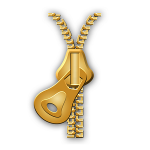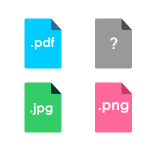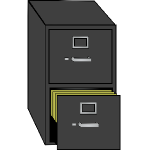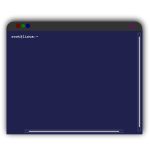 This week I was introduced to a new text editor. While it is not a command line text editor, or even a Linux-only text editor, it does fit pretty well into the current line-of-thought.
This week I was introduced to a new text editor. While it is not a command line text editor, or even a Linux-only text editor, it does fit pretty well into the current line-of-thought.
Atom is a GitHub project described as a “hackable text editor for the 21st century”. It is designed to be deeply customizable, but still approachable, using the default configuration. Atom can be run on OS X, Windows, and Linux.
For anyone who does not already know, GitHub is a web-based repository hosting service for Git, which is a version-control and management software for source code. Github is used primarily to host open-source software projects. It’s a popular social network for developers, programmers, and even end-users.
Atom provides support for over 25 web/programming languages, such as HTML, CSS, Javascript, PHP, Python, Perl, MySQL, C, Ruby, and Java, to name a few.
Read More
 Gwenview is KDE’s default image viewer.
Gwenview is KDE’s default image viewer.
 Ok, I admit it; I don’t actually spend all of my time in the command line. All-in-all, I spend very little time in the command line.
Ok, I admit it; I don’t actually spend all of my time in the command line. All-in-all, I spend very little time in the command line. This week I was introduced to a new text editor. While it is not a command line text editor, or even a Linux-only text editor, it does fit pretty well into the current line-of-thought.
This week I was introduced to a new text editor. While it is not a command line text editor, or even a Linux-only text editor, it does fit pretty well into the current line-of-thought. There are file types that exist for no purpose other than to package other individual files together into a bundle, and even to compress that bundle’s file size.
There are file types that exist for no purpose other than to package other individual files together into a bundle, and even to compress that bundle’s file size. What makes a file recognizable as a photo, or as a video, or as any other type of file? And how does your computer know what program to use, to open each file?
What makes a file recognizable as a photo, or as a video, or as any other type of file? And how does your computer know what program to use, to open each file? How do you know where to find files on your computer?
How do you know where to find files on your computer? A computer, contrary to popular opinion, does not actually have a mind of its own.
A computer, contrary to popular opinion, does not actually have a mind of its own. Today’s subject is, by popular demand, a continuation of last week’s
Today’s subject is, by popular demand, a continuation of last week’s  Oftentimes, while in the middle of a conversation, there will be a word that I want to use because it fits the context perfectly, and yet I am unable to remember the word.
Oftentimes, while in the middle of a conversation, there will be a word that I want to use because it fits the context perfectly, and yet I am unable to remember the word.